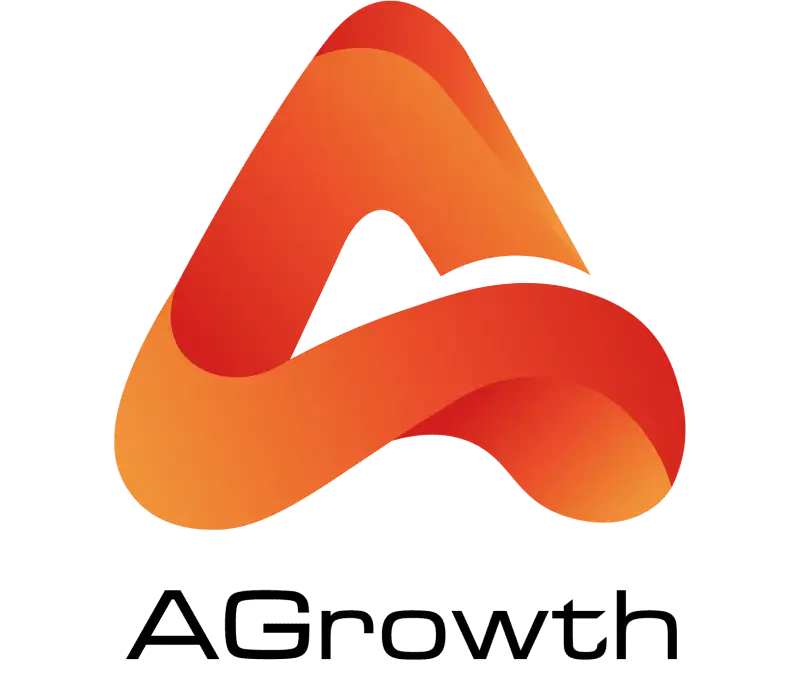
Table of Contents
Facebook Attribution Settings: How to Choose the Right Window for Accurate Ad Reporting
Facebook Attribution Settings define how conversions are credited to your ads. They determine whether a purchase, lead, or signup is attributed to a click made one day ago or seven days ago — or even a view without a click at all. The difference between a 1-day click and a 7-day click window can completely reshape your reported return on ad spend (ROAS) and your optimization decisions.
Yet many advertisers still rely on default settings without understanding their implications. Since Meta moved from a 28-day to a 7-day default attribution window post–iOS 14, accurate reporting has become more nuanced than ever. Marketers now need to analyze attribution strategically — balancing immediacy, accuracy, and campaign goals.
In this guide, we’ll break down everything you need to know about Facebook Attribution Settings — including how they work, how to choose the right window for your business, and how to compare performance across different attribution models. You’ll also learn how to access and adjust attribution settings in Ads Manager, and gain advanced insights into attribution modeling, decision frameworks, and the future of Meta’s privacy-safe measurement.
What Are Facebook Attribution Settings?
Attribution refers to the process of crediting specific actions (like purchases, leads, or installs) to ads that influenced a user’s journey. Facebook’s Attribution Settings determine how long after someone interacts with your ad that a conversion can still be counted.
According to Meta Business Help Center, “the attribution setting controls how we count conversions and how we report actions that occur after people view or click your ads.” In simple terms, it defines the lookback window — the time between ad interaction and conversion.
Before 2021, Meta allowed a 28-day click window by default. However, after Apple’s iOS 14 privacy updates, the system now uses a 7-day click and 1-day view window by default. This means conversions are attributed only if they happen within 7 days of a click or 1 day of a view.
Understanding Attribution Concepts
Before diving into settings, it’s important to understand the key concepts that define how attribution works inside Meta Ads Manager.
Attribution vs Conversion Window
Many marketers use these terms interchangeably, but they have different meanings.
-
The Attribution Window defines how long Meta looks back to attribute a conversion to an ad interaction.
-
The Conversion Tracking Period defines how long the platform measures actions after someone interacts with your ad.
In other words, attribution is about credit, while conversion tracking is about observation.
For example, if your campaign uses a 7-day click window, and a user clicks your ad but converts on day 5, that conversion will be counted in your Meta reports. But if the same person converts after 10 days, Meta will not attribute it to the ad.
After iOS 14, Meta reduced the available options from 28 days to 7 days by default. This change was implemented to align with Apple’s App Tracking Transparency (ATT) framework and ensure compliance with user privacy choices. The Meta Business Help confirms: “Reporting will be limited to events that occur within the attribution window you’ve selected.”
Types of Attribution Windows in Meta Ads
Inside your ad set settings, you'll find several options. Let's break down what each one measures and when it might be the right choice.
-
7-day click or 1-day view (The Default): This setting credits a conversion if a user either clicks your ad and converts within 7 days, OR views your ad (without clicking) and converts within 1 day. It's a blended model that captures both direct responses and passive influence.
-
7-day click: This is a more conservative setting. It only credits conversions that happen within 7 days of a user clicking your ad. It completely ignores view-through conversions.
-
1-day click or 1-day view: A shorter blended window that measures clicks within 1 day and views within 1 day.
-
1-day click: The most conservative and immediate setting. It only attributes conversions that occur within 24 hours of a click.
Choosing the Right Attribution Window
Understanding the options is half the battle; applying them strategically is what drives results. The right attribution window is not universal—it’s deeply tied to your business model, product, and customers' path to purchase.
Match Window Length to Purchase Cycle
Your attribution window should mirror your customer’s decision-making process:
-
Fast decisions (impulse buys, low-ticket items):
A 1-day click window gives a realistic view of quick conversions and prevents inflated metrics. -
Longer consideration products (B2B, high-ticket eCommerce):
A 7-day click or 1-day view captures delayed purchases influenced by research or multiple touchpoints. -
Subscription or remarketing campaigns:
A 7-day click + 1-day view window helps track nurturing and re-engagement actions effectively.
If your campaigns involve multi-step customer journeys, combining click and view windows provides a better balance between reach and accuracy.
When to Include or Exclude View-Through Conversions
View-through conversions can be tricky. While they help capture awareness-driven results, they can also inflate metrics if not interpreted carefully.
Benefits of including 1-day view:
-
Reflects upper-funnel influence when users convert shortly after exposure.
-
Useful for brand or video campaigns where clicks are low but impact is real.
Risks of including 1-day view:
-
May count conversions that weren’t truly influenced by the ad.
-
Overestimates ad performance, especially in retargeting.
Example:
If removing 1-day view reduces your ROAS from 3.2x to 2.8x, it doesn’t mean your ads are performing worse — it means you’re seeing a more realistic picture of causation.
For accurate optimization, test your campaigns with and without view-through enabled to find the best balance.
How to Access and Change Attribution Settings in Meta Ads Manager
Before you can optimize your reporting or compare conversion performance across campaigns, it’s essential to understand where and how to adjust your attribution settings inside Meta Ads Manager. Meta allows advertisers to define attribution windows at the ad set level, giving you control over how conversions are recorded and attributed to your ads.
Navigate to Your Ad Set Level
Attribution settings are configured at the ad set level — not the campaign or ad level.
To access them:
-
Open Meta Ads Manager.
-
Choose the campaign and ad set you want to adjust.
-
Click Edit next to the ad set name.
-
Scroll down to the “Show More Options” section within the Optimization & Delivery tab.
Here, you’ll see the Attribution Setting field, which defines the conversion window Meta will use to credit actions to your ads.
According to Meta’s official documentation, “The attribution setting is the number of days between when someone viewed or clicked your ad and took an action.” This means your selection directly affects what conversions show up in your reports.
Modify the Attribution Setting
To change the attribution window:
-
In the Attribution Setting dropdown, click Edit.
-
Select one of the available options:
-
1-day click
-
7-day click
-
1-day view
-
7-day click and 1-day view (combined)
-
Save your changes and publish the ad set.
Note: Once an ad set is published, you cannot change its attribution setting without duplicating it. Meta locks this setting to maintain data consistency. If you want to test multiple windows, duplicate your ad set and assign each a different attribution model.

Keep iOS 14+ and Privacy Updates in Mind
Since the rollout of Apple’s App Tracking Transparency (ATT), Meta’s reporting has become more restricted.
Attribution windows longer than 7 days are no longer supported for users who opt out of tracking.
As Meta notes, “Attribution settings are limited to a maximum of 7 days for click-through and 1 day for view-through conversions.” (Meta Help Center)
If your campaigns rely heavily on iOS traffic, expect discrepancies between reported and actual conversions.
To mitigate this, pair your attribution setup with Meta’s Conversions API (CAPI) — a server-side solution that improves data accuracy even under tracking limitations.
Tip: Align Attribution with Optimization Goals
Your attribution setting should match your optimization event and sales cycle.
For example:
-
If your ad set optimizes for Add to Cart, a 1-day click may capture the intent-driven actions more accurately.
-
If your optimization event is Purchase for higher-value items, a 7-day click helps account for delayed buying behavior.
AGROWTH - META AGENCY ACCOUNT
⭐ Managed campaigns with expert guidance
⭐ Flexible invoice-based billings, custom top-ups
⭐ High resistance to suspension via agency tier
⭐ Quick fund transfer to new account if needed
⭐ Priority support via Facebook Partner channel
⭐ Lower fees from 3%
Advanced Strategies and Insights
Once you've aligned your attribution settings with your business model, you can leverage advanced tactics to extract deeper insights and gain a competitive edge.
Comparing Attribution Models in Practice
Meta's Ads Manager has a powerful built-in feature that many advertisers overlook: the "Compare Attribution Settings" tool. This allows you to view your campaign data through the lens of different windows simultaneously, without having to run separate A/B tests.
To use it, go to your Ads Manager reporting columns, select "Customize Columns," and find "Attribution Setting" on the bottom right. You can then check multiple windows to compare them side-by-side in your dashboard.
Example Test: Analyzing 1-day vs. 7-day click performance
Let's look at a hypothetical ad set's data after one week, using the comparison tool:
|
Metric |
1-Day Click |
7-Day Click |
|
Purchases |
50 |
85 |
|
Cost Per Purchase |
$40 |
$23.53 |
|
ROAS |
2.5x |
4.25x |
Analysis: This table clearly shows that a significant number of conversions (35, or over 40% of the total) occurred between day 2 and day 7 post-click. If you were optimizing this campaign using only a 1-day click window, you would see a $40 CPA and a 2.5x ROAS. You might decide to turn it off.
However, the 7-day click data reveals a much healthier CPA of $23.53 and a 4.25x ROAS, indicating a highly profitable campaign. This practice is essential for avoiding premature and costly optimization mistakes.
Attribution Decision Framework
To simplify your choice, use this decision flowchart:
-
Start: What is your product's typical purchase cycle?
-
Impulsive / Short (under 24 hours): Go to Step 2.
-
Considered / Long (2+ days): Go to Step 3.
-
For Short Cycles: Are you focused on immediate sales or brand visibility?
-
Immediate Sales (most e-commerce): Use 1-day click. This provides the cleanest data for direct-response optimization.
-
Brand Visibility / Top of Funnel: Consider 1-day click or 1-day view, but monitor your click-driven ROAS separately.
-
For Long Cycles: Is your primary goal lead generation/sales or a mix of branding and performance?
-
Lead Gen / Sales (B2B, high-ticket): Use 7-day click. This is the gold standard for capturing the full value of a longer customer journey.
-
Mix of Branding & Performance: Start with 7-day click or 1-day view, but commit to regularly using the "Compare" tool to analyze the true impact of clicks vs. views.
For agencies: Avoid a one-size-fits-all approach. A B2B SaaS client requires a 7-day click window, while a fast-fashion DTC client will get cleaner data from a 1-day click setting. Educate your clients on why their attribution setting is tailored to their specific sales cycle to build trust and manage expectations.
FAQs about Facebook Attribution Settings
Why is a 7-day click or a 1-day view the default setting?
This setting provides Meta's algorithm with the maximum amount of conversion data by capturing both click and view signals. More data generally helps the algorithm exit the learning phase faster and find the right users. However, more data is not always better or more accurate for your specific business goals.
Can I change the attribution setting for a campaign that is already running?
No. The attribution setting is locked once an ad set is published. To change it, you must duplicate the ad set, select the new attribution window, and publish it.
How does the attribution setting affect the learning phase?
A longer window (e.g., 7-day click) can provide more conversion signals over time, which can help an ad set exit the learning phase. However, a shorter window (e.g., 1-day click) provides faster feedback. If your product has a short sales cycle, a 1-day window can help the algorithm optimize more quickly based on the most relevant data.
Does a shorter window mean faster optimization?
Yes and no. A 1-day click window gives you performance data faster, allowing you to make quicker decisions. However, if your actual purchase cycle is longer, you might make the wrong decision by optimizing too quickly based on incomplete data. Speed is only valuable when the data is accurate for your business context.
Can I set different attribution windows for different objectives (e.g. leads vs purchases)?
Yes. Because attribution is configured at the ad set level, you can use different windows for different objectives. For example, you might use a 1-day click window for lead-generation funnels (fast action), and a 7-day click + 1-day view window for purchase objectives where the decision is more deliberate.










Your comment